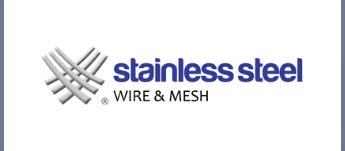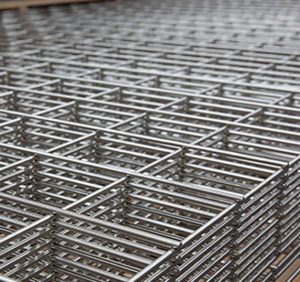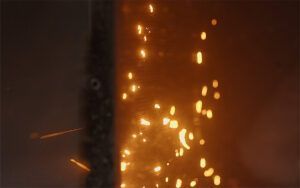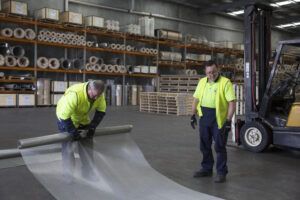Stainless steel is a great product with many benefits including its look! We find it is a common misconception that Stainless Steel will forever maintain its silver appearance. As the name suggests it is ‘Stain – less’ not stain free. In other words it is ‘Low’ maintenance, not ‘No’ maintenance.
Under particular conditions stainless steel can develop ‘tea staining’. Although unsightly, this brown staining is a cosmetic issue, it does not affect the structural integrity of the lifetime of the stainless steel. On our CARE page and an earlier BLOG post we discuss what tea staining is and how to maintain & clean stainless steel. This is all well and good however, where this is an issue is when the mesh is being used for its aesthetic appeal in architectural applications or external applications.
We have therefore recently added a section ‘the lasting look’- the surface treatment to minimise tea staining to the CARE page which we go through below. Cleaning with soap or a mild detergent or even an industrial cleaner does not cut the mustard with the fine meshes- as you cannot reach between all the weaves and the tea staining may return under particular conditions.
The good news is there is a solution that will last and stand the test of time! Pickling & passivation and electro polishing- is a simple and inexpensive process.
It is recommended than when stainless steel is to be used for external purposes that it be electropolished.
‘The Lasting Look’ – Stainless steel mesh- pickling & passivation and electro polishing explained


What is Pickling & Passivation
Pickling and passivation are both forms of chemical (acid) treatments applied to the surface (often submerged in a bathing liquid) of stainless steel to remove contaminants (surface impurities such as rust) and assist in the formation of a continuous chromium-oxide, passive film that provides protective properties.
What is the difference between pickling & passivation
On the surface there does not seem to be much difference between the two processes. The differences come down to the intensity of the treatments;
- Pickling uses acids such as hydrochloric or sulfuric that remove the surface impurities at a sublevel basis
- Pickling leaves a greater change to the metal, metal removal and a change or dulling in the visual brightness of the metal
- Passivation uses either nitric acid or citric acid which are less aggressive than the acids used in pickling to remove contaminates and promote the formation of the passive oxide film
- Passivation is the treatment of the surface of the stainless steel. It does not typically go below the surface of the metal and does not change the properties of the metal.
What are the advantages of pickling & passivation?
Both types of metal finishing have great advantages for stainless steel wire & mesh
Pickling & Passivating when applied to the surface of stainless steel
– Removes contaminants
– Removes heat tint due to welding
– Formation of a continuous enriched chromium oxide protective layer
Both pickling and passivation solutions can employ dangerous acids that can damage both the operator and the environment if not handled correctly. Stainless pickling acids are highly corrosive to carbon steel.
It is essential that all acids are thoroughly removed by rinsing the component after completing the process. Residual hydrofluoric acid will initiate pitting corrosion.
How does electro polishing of stainless steel work?
Electro polishing is a highly effective metal finishing treatment it is also referred to as the ‘final step’ in the manufacturing process. Electro polishing is an electrochemical process that uses an electrolyte bath and rectified current to remove a uniform layer of surface material from the stainless steel item. It is used by a range of industries;
– architectural
– automotive
– medical
– food & beverage
– dental
Benefits of Electropolishing include;
– Remove surface flaws & impurities
– Remove high points and round troughs
– Passivates greater than any other process
– Maximises the protection of stainless steel against tea-staining and corrosion
– Brightens the surface finish to provide a bright and shiny chrome-like appearance
– Smooths the surface enabling the surface to naturally wash, thereby significantly diminishing the likelihood of future rust
Please note as with anything internal or external cleaning and maintenance is still required to keep your mesh clean and preserve its appearance.
Please use a reputable surface finisher and please note certificates should be available for any chemical treatment.
So now you’ve got it ‘the lasting decision’ and ‘the lasting look’!





